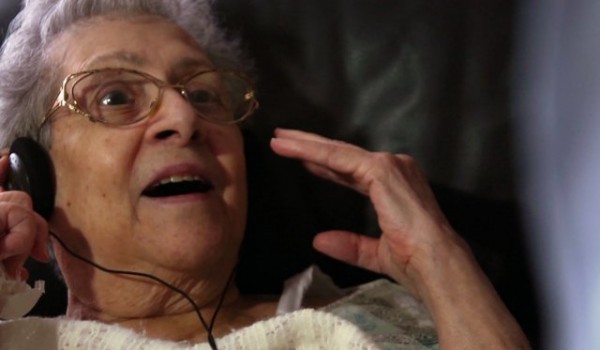AARP Eye Center
'Alive Inside': Music + Alzheimer's = Miracle
By Bill Newcott, July 22, 2014 07:00 AM

When you speak, you're mainly using the left hemisphere of your brain.
When you look at a painting, it's the rear of your brain that perceives what you're seeing.
But the brain has no precise center for music. When you listen to music you love, all your gray matter gets into the act: Do a scan of a brain listening to music and virtually the entire thing starts to glow, like embers in a warm hearth.
That brain-wide embrace of music intrigued Long Island social worker (and tech expert) Dan Cohen: Why not play music for patients suffering from dementia? Not just any music, but the very tunes they loved in their past. As the music flowed through the farthest reaches of their afflicted brains, he wondered, might it unlock memories associated with it?
>> Sign up for the AARP Health Newsletter
Cohen's question drives an uplifting new documentary, Alive Inside, which chronicles his experiment with music and memory .
Experts have long speculated about the benefits of music for Alzheimer's patients, and most nursing homes rely heavily on music as a therapeutic tool.
Cohen put his theory into action in 2006. First, he programmed some iPods with music recommended by family members of a few selected nursing-home residents. Then he took the devices to the facility and stood back to watch what happened when the tunes began to play.

With disarming intimacy, Alive Inside director Michael Rossato-Bennett captures the inspiring moments when long-dormant patients suddenly spark to life, remembering not just distant memories but also who they are.
Now Cohen heads Music & Memory, a nonprofit group that teaches nursing-home staffers, elder-care professionals and family caregivers how to create personalized playlists designed to help those struggling with Alzheimer's, dementia and other cognitive and physical conditions to reconnect with the world through music-triggered memories.
Yet the triumphant singing and dancing and tears of joy on display in Alive Inside raise a troubling question: Why doesn't every hospital memory unit in the country have a stack of iPods in its closet?
>> Get travel discounts with your AARP Member Advantages.
Sitting in my office the other day, Cohen and Rossato-Bennett sadly acknowledged that one chief barrier is money. But not in the way you'd expect: Music therapy doesn't cost too much, it costs too little.
"If there were a drug that does what music does for these people," Rossato-Bennett said, "it would be the most blockbuster, multibillion-dollar drug.
"But you can't sell music."
He turned to Cohen.
"Are there any side effects to music, Dan?"
Cohen smiled softly.
"No," he said. "No side effects."
Other than, he might have added, a miracle or two.
Photo: The City Drive Films

Also of Interest
- Bryan Cranston to Reprise LBJ Role in TV Movie
- 6 Places Never to Use Your Debit Card
- Fight fraud and ID theft with the AARP Fraud Watch Network.
- Join AARP: Savings, resources and news for your well-being
See the AARP home page for deals, savings tips, trivia and more























































